Tales of the Tape: Breaking down key Week 4 matchups

The game of football is all about matchups. Each week, we will use the Xs and Os to highlight some critical showdowns on the upcoming schedule.
Falcons at Vikings: Tracking Teddy
Right off the top, let's hit this: Teddy Bridgewater is not a "running quarterback". He is a quarterback who can run. There is a huge difference.
The former category includes guys like Michael Vick or Tim Tebow; the latter, Andrew Luck or Aaron Rodgers -- QBs who can move the pocket or take off when trouble arrives, but who are more inclined to stay home and beat you with their arms.
Bridgewater having that ability in his back pocket, though, gives Minnesota offensive coordinator Norv Turner a little more freedom in his play calling than Matt Cassel did. And Bridgewater also will force defenses to account for him on scrambles, as they have to with the Lucks and Ben Roethlisbergers of the world.
Even pressed into action last Sunday in New Orleans, Bridgewater offered a quick glimpse at how he can boost the Vikings' offense. Look no further than the play pictured below, a designed QB draw inside the New Orleans' red zone. The Saints rushed just three defenders against a four-wide offensive set, but with Matt Asiata pulling a linebacker out of the middle of the field in coverage, there was no one left to account for Bridgewater.
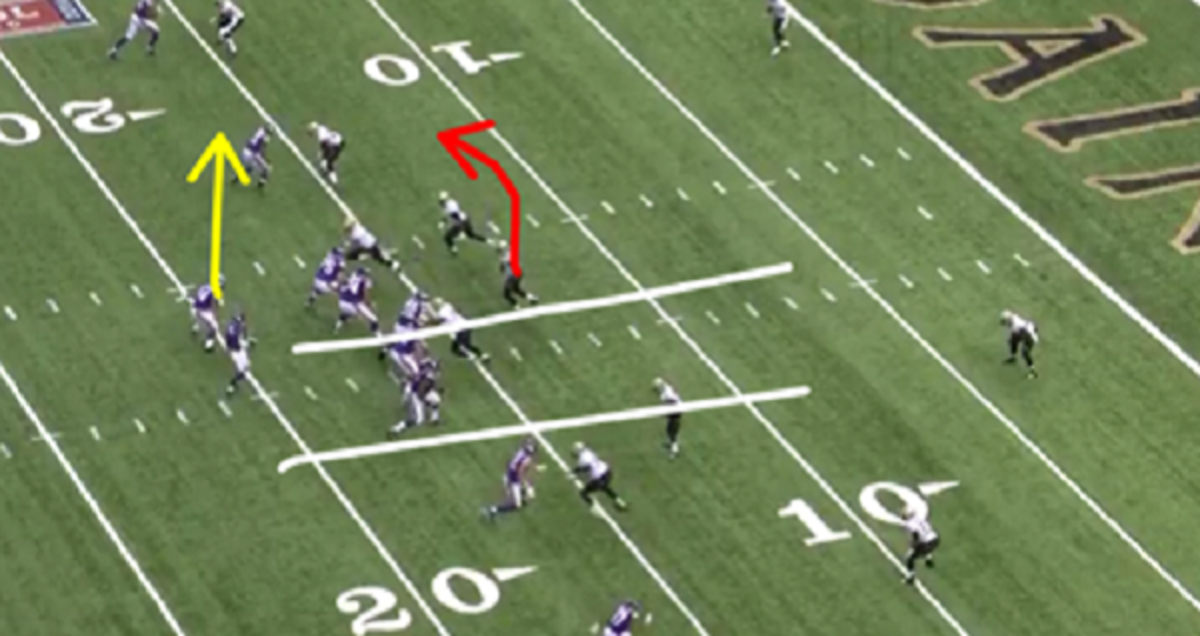
A similar set of circumstances unfolded later in the game, when Bridgewater picked up solid yardage on scramble. Again, the Vikings had three receivers and a tight end running routes; the Saints countered by rushing five and playing a Cover-2 shell deep.
As soon as Bridgewater completed his dropback, he saw room if he could escape the pocket.
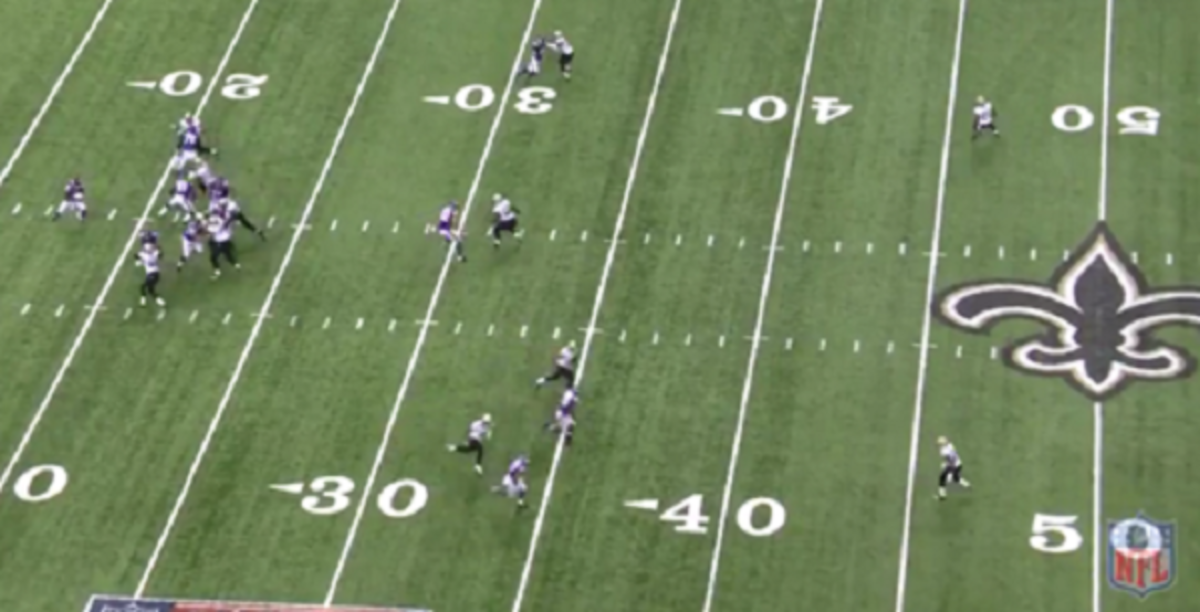
The trick for Bridgewater on non-designed QB runs is making sure he does not bail on the play too quickly, either to take off or to look for his check-down. Younger quarterbacks especially can have issues there -- Russell Wilson, for example, still bolts before he should on occasion.
NFL fan poll: Should Roger Goodell keep job? More state of the game
In the play pictured below, Bridgewater did complete a pass to his safety valve, RB Matt Asiata (white arrow), with the Saints blitzing again. He stayed in the pocket just long enough to both let Asiata get into space and to let the receivers running deep routes clear their defenders away.
Most importantly, Bridgewater's first instinct was to look for Asiata, not to take off against the Saints' pressure.
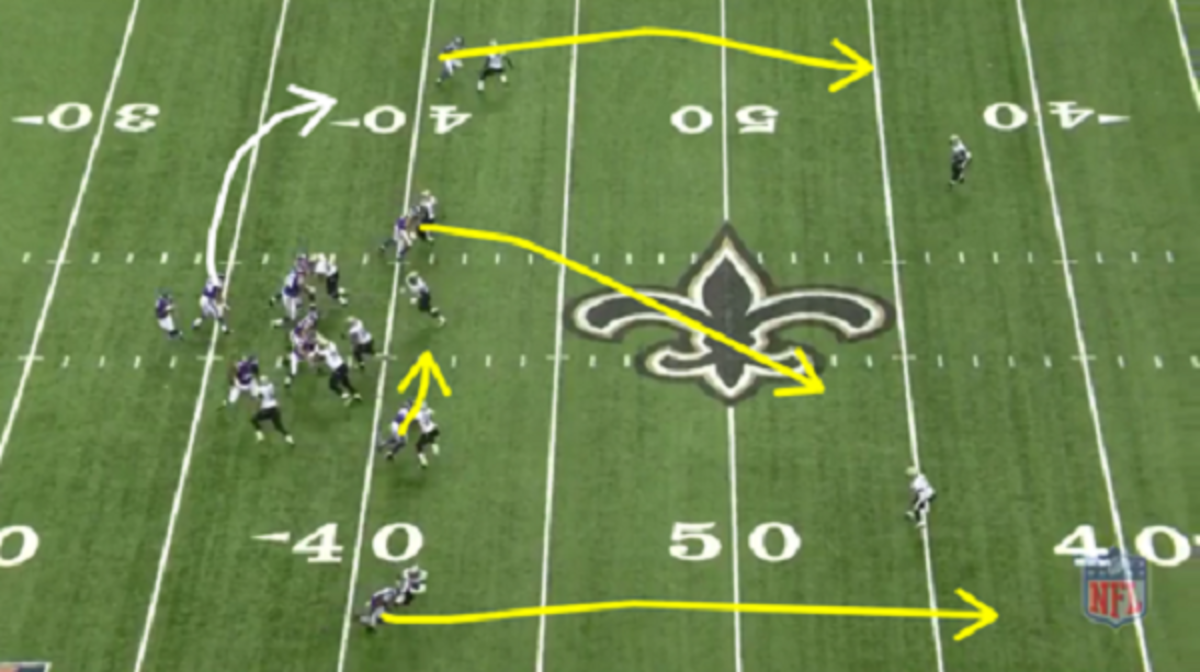
Turner tried to minimize the number of times that Bridgewater had to make such decisions Sunday in New Orleans. (Even so, Bridgewater actually was more inaccurate on his shorter, safer routes than when he went downfield.)
One of the easiest ways to avoid such predicaments: get Bridgewater on the move. Here, a simple play-action rollout buys Bridgewater a little time and he responds by threading the needle to Greg Jennings.
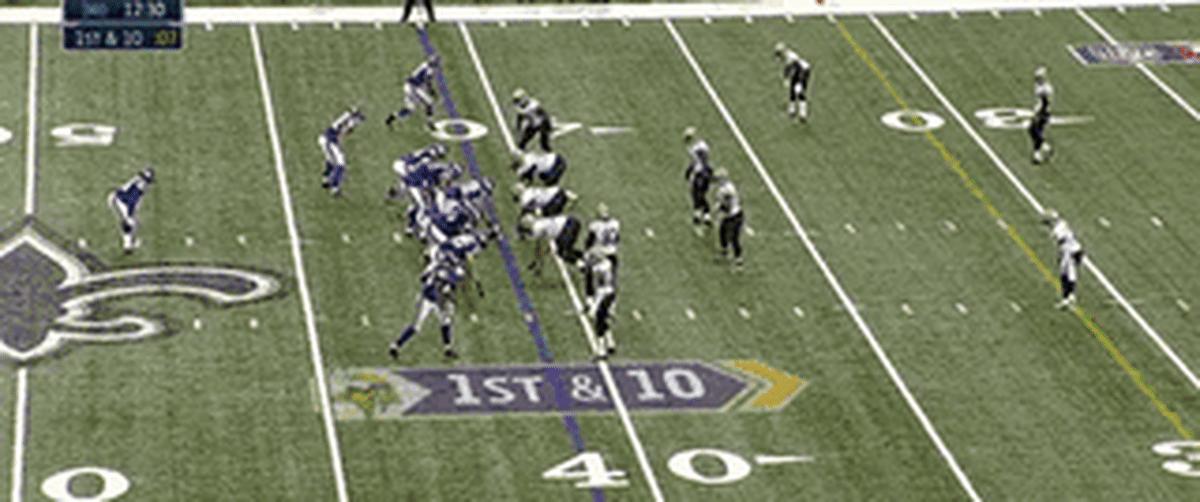
Bridgewater does not have a rocket arm and he certainly will make some mistakes as a first-year NFL starter. All that said, one of the best qualities he showed at Louisville was an ability to decipher defenses on the spot, be it pre-snap or with the ball in his hands.
On the completion to Jennings, he throws his receiver open by leading him to the sideline, away from heavy traffic in front of him.
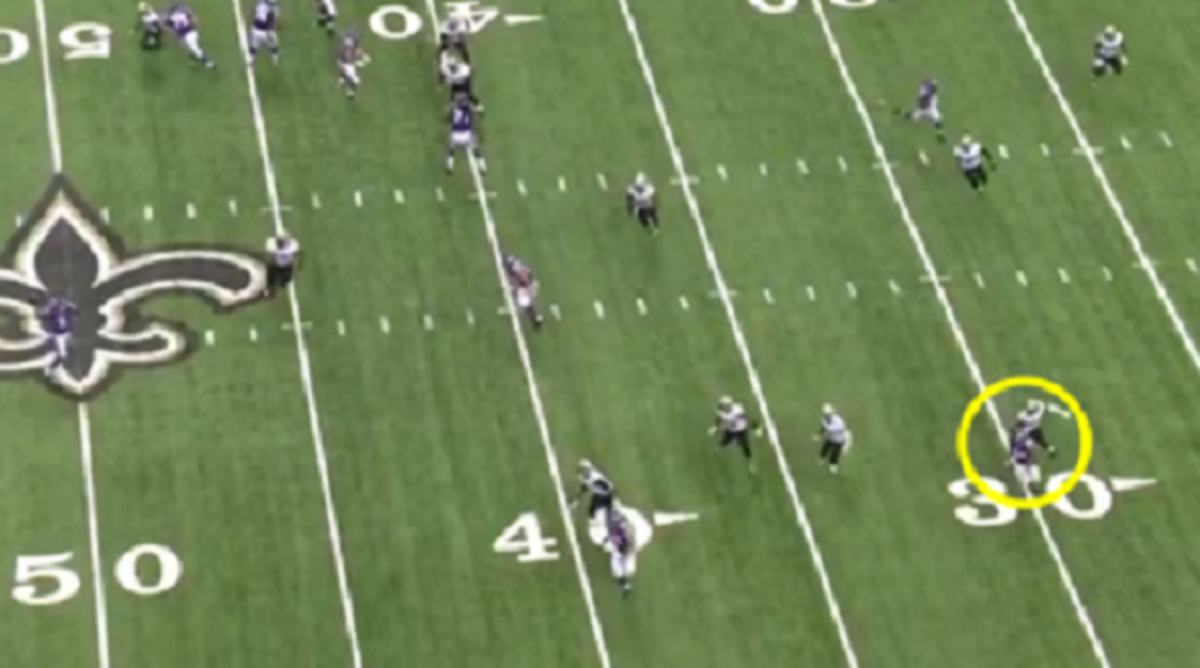
Another example of Bridgewater's patience ...
Here we see a well-designed underneath crossing route for Cordarrelle Patterson. The Saints' defense is mostly locked in place by a trips formation on the opposite side of the field. It takes a couple of seconds, however, for Patterson to break his route and come clear of the middle traffic, so Bridgewater has to trust his line.
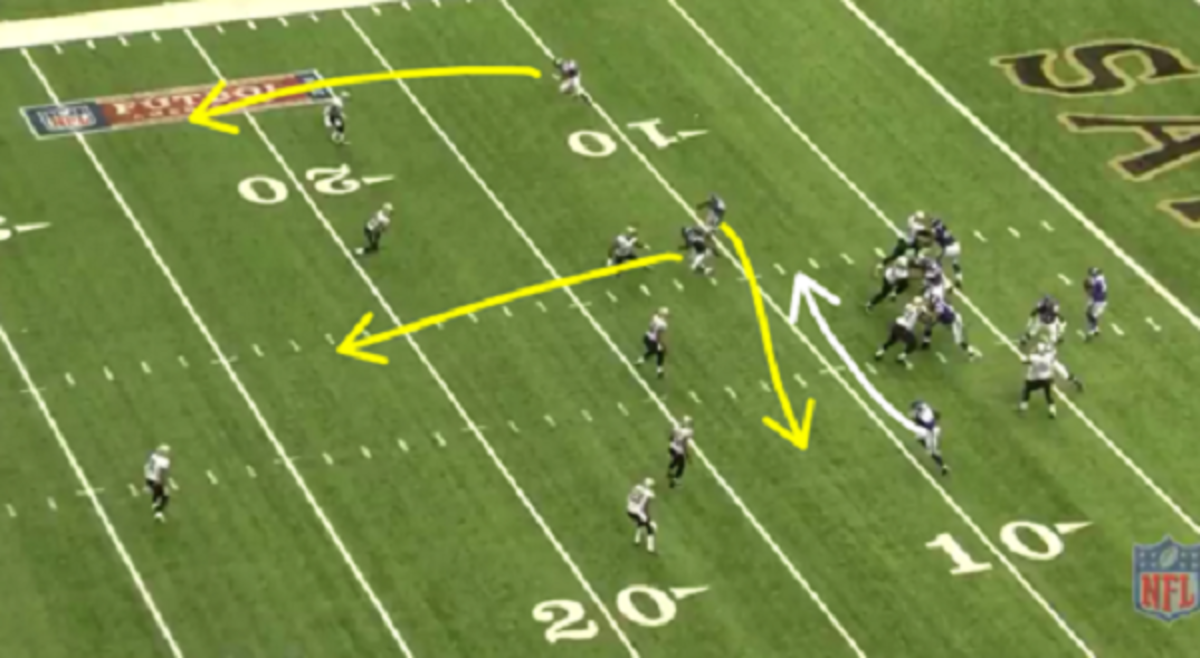
Patience. Progressions.
Those are the two key words for Bridgewater as he prepares to face Atlanta on Sunday. Even with some personnel holes this season, Falcons defensive coordinator Mike Nolan continues to employ a defense that relies heavily on disguising coverages.
Also known as an "amoeba defense", Nolan often shows as many as seven or eight defenders at the line, the formation shifting after the snap so it's difficult to tell which players are pass-rushing and which are dropping in coverage. The best QBs in the NFL have struggled against such look at times.
Tampa Bay's Josh McCown does not fall into that upper-echelon, but he and Mike Glennon saw first-hand how frustrating the varied attack can be.
One play in particular from last Thursday night highlights it. With the Buccaneers lining up in a tight formation -- a receiver and tight end to Glennon's left, two WRs to his right, all pulled in close to the tackles -- the Falcons show seven in the box.
Five come after McCown, two (one being DE Kroy Biermann) fall out in coverage.
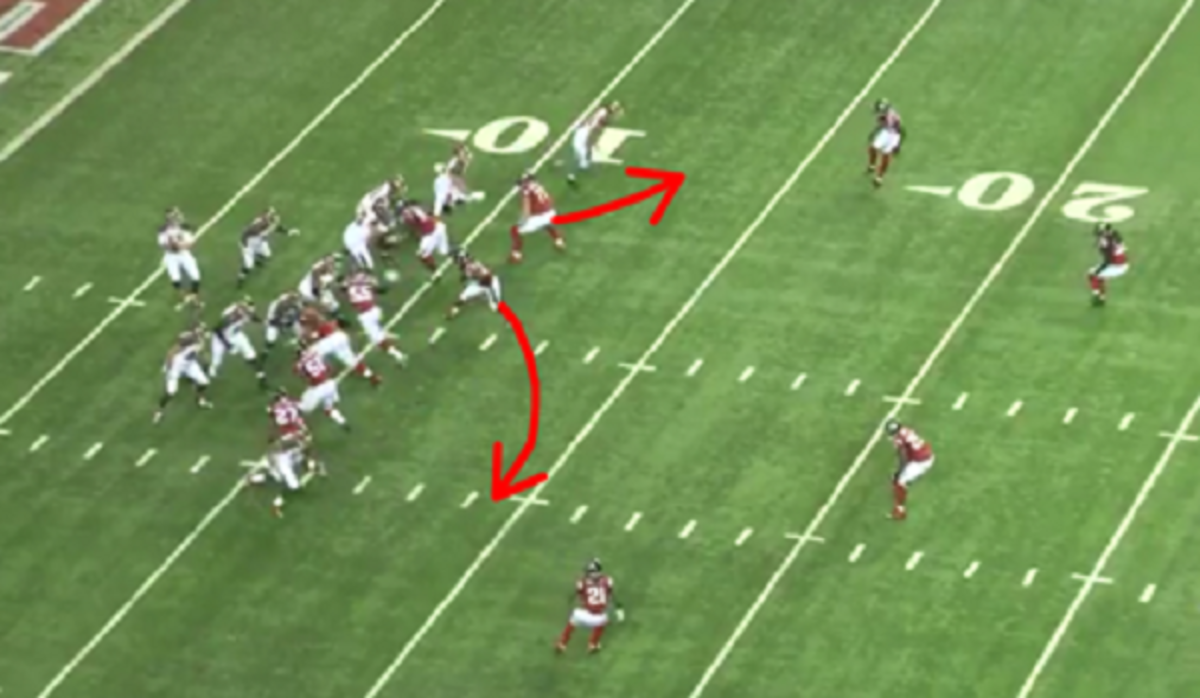
The action creates a hole up front, through which Corey Peters comes untouched, and rushes McCown's clock. Rather than look to his right, where he has two options covered by one Falcons defender, he tries to force a pass in to Vincent Jackson on the left.
Pick-six.
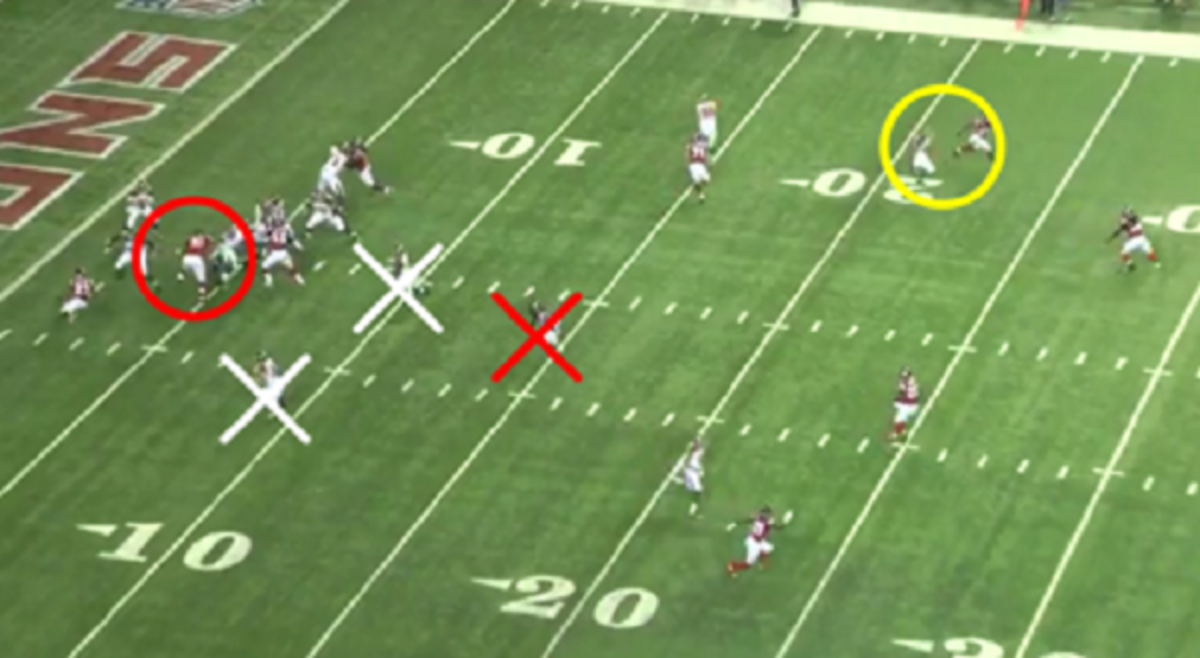
Nolan will do whatever he can to create confusion in Bridgewater's mind. This should be a nice test for the rookie QB in his first NFL start.
Jaguars at Chargers: About that Jags pass defense...
We know, really beyond a shadow of a doubt at this point, that Philip Rivers can sling it with the best of them. He has been absolutely sensational during a season-plus in Mike McCoy's offense.
So this week, with San Diego taking on the 0-3 Jaguars, things could get ugly.
NFL Power Rankings Week 4: Bengals maintain top spot after dominant win
Jacksonville's defense has been shredded through the air in every games this season -- its 918 passing yards allowed (including 385 to the Colts last Sunday) ranks dead last in the league. Prior to the NFL's Week 3 slate, we put the Chargers' offense under the microscope a bit to explain how Antonio Gates had picked apart Seattle's defense.
The answer: McCoy's system is excellent at creating mismatches and Rivers is as capable as almost any QB in the league at finding them. He may not have to look far Sunday.
The Jaguars continue to have absolutely head-scratching breakdowns in the secondary, either because of communication issues or simple mistakes in coverage. Below, the Colts run about as basic a route combination as a team can in the NFL -- Reggie Wayne and T.Y. Hilton to Andrew Luck's right, with Hilton simply running a deep pattern and Wayne a hesitation deep out.
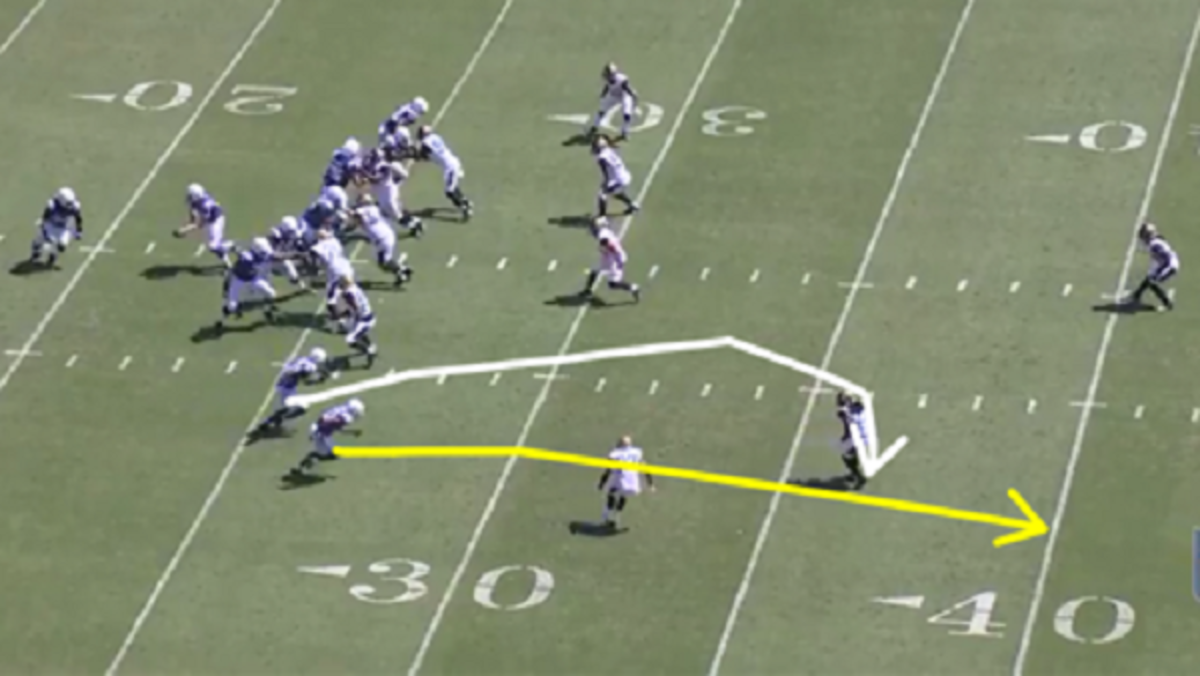
Somehow, the Jaguars absolutely blow the coverage on Wayne, with three defenders tracking Hilton and the linebackers all failing to drop deep enough to help.
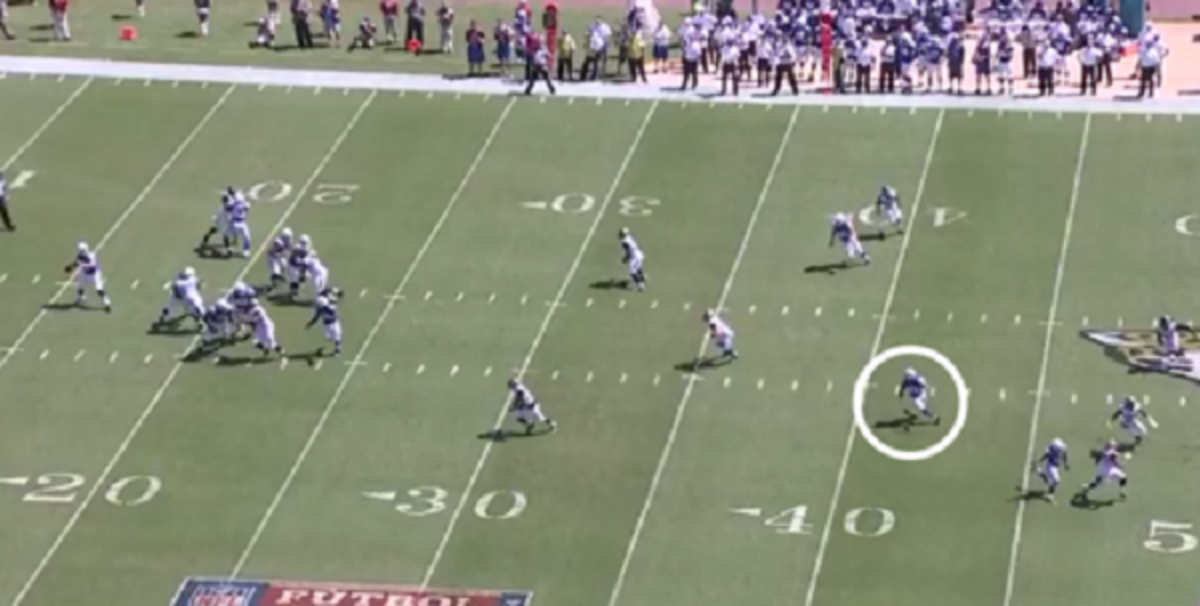
A similar play later produced almost the exact same problems. This time, it's Wayne taking off on a fly pattern and Hilton cutting to the sideline.
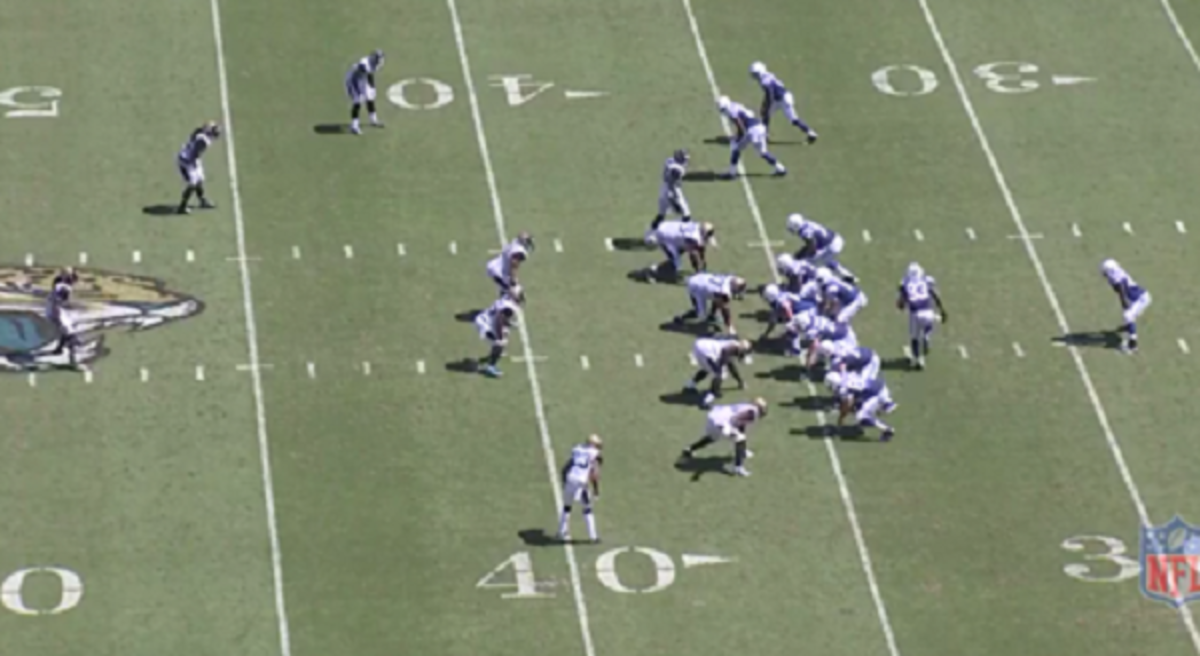
Annnnnd ... yuck.
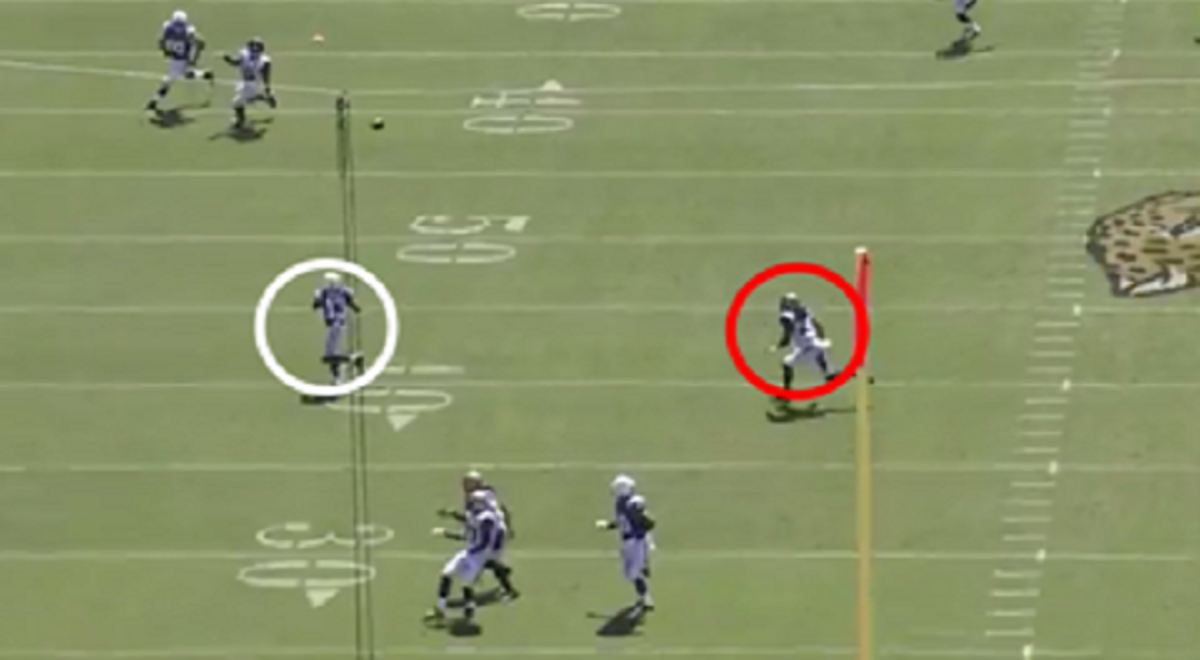
Safety Johnathan Cyprien turns his hips inside when Hilton fakes that way, then gets left in the dust with no assistance as Hilton completes his pattern.
Jacksonville has shown little progress in these areas, too. Going back to Week 1 against the Eagles, Nick Foles threw for 322 yards and easily could have hit 400 if he hadn't repeatedly failed to see available targets.
A play-fake to LeSean McCoy here freezes the Jaguars' defense, thus leaving two Eagles against one Jacksonville cornerback downfield.
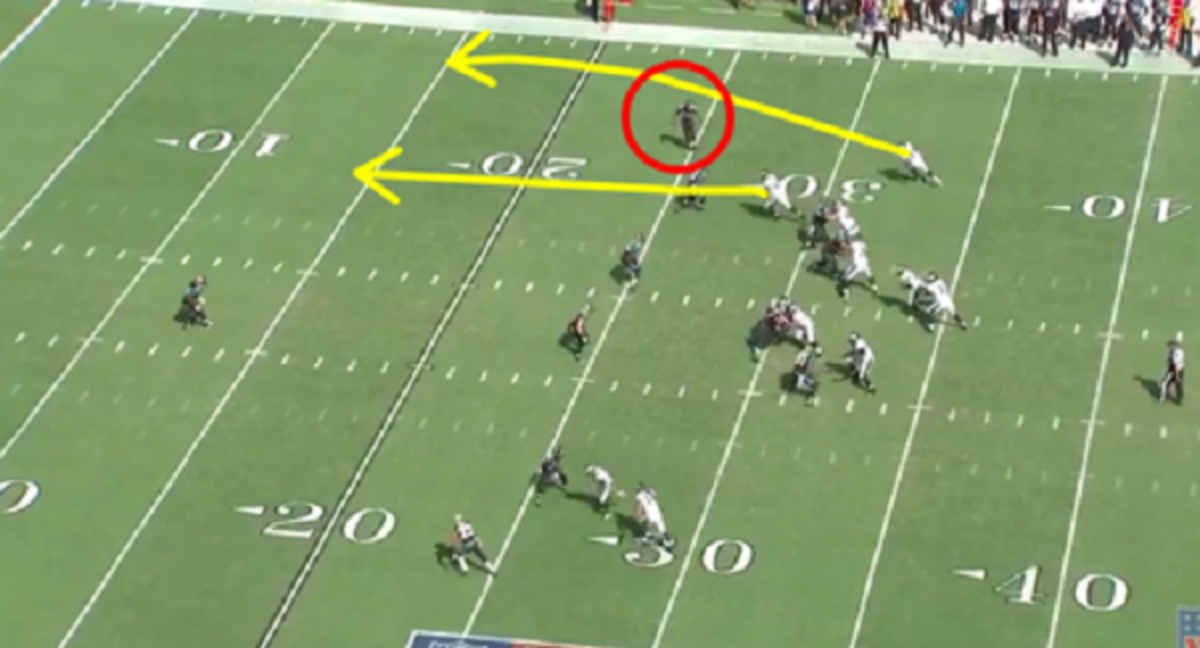
For whatever reason, Foles opts for the check-down route to McCoy, but TE Zach Ertz basically has free run of the final 20 yards to the goal line.
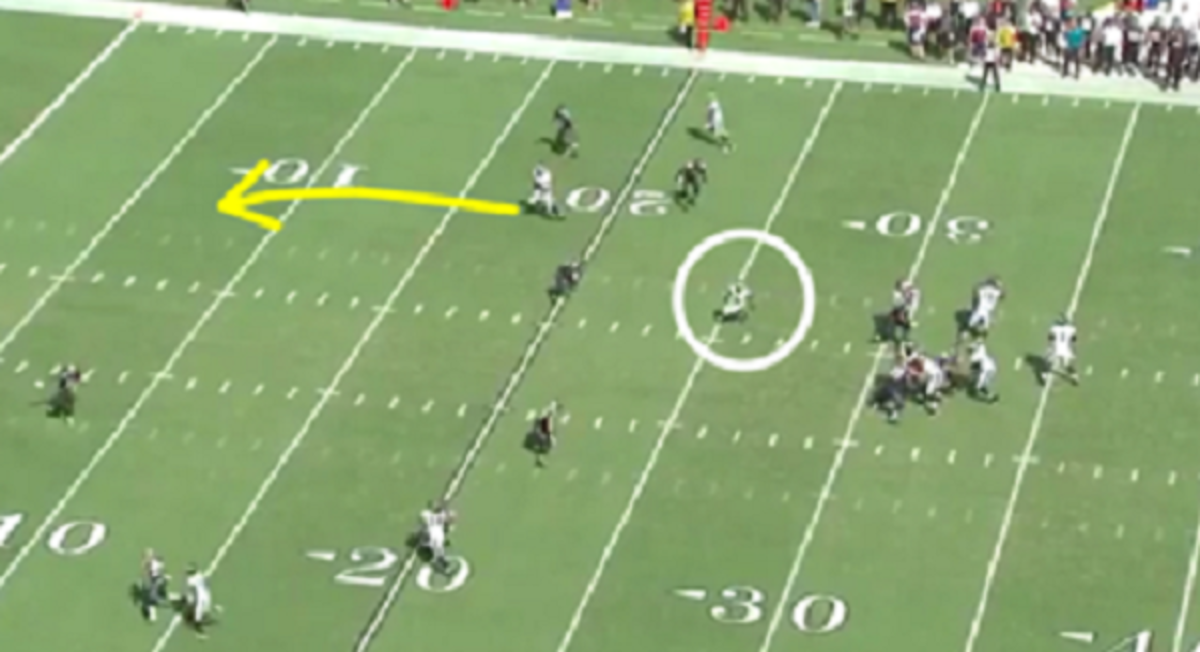
Barring a massive one-week improvement from Jacksonville's secondary, Rivers should be in line for a huge afternoon.
Buccaneers at Steelers: The Bell tolls for three
Best running backs in the league? The discussion starts with McCoy, Jamaal Charles when he's healthy and Adrian Peterson when he's actually playing ...
But Le'Veon Bell (and Dallas' DeMarco Murray, the way he is playing right now) probably belongs in the discussion. In three games to open the season, Bell has rushed for 315 yards on just 53 carries -- a 5.9 yards-per-attempt average. Last Sunday night, he torched the potent Carolina front for 147 yards, highlighted by an 81-yard scamper.
Of course, he has not done it alone. Pittsburgh's offensive line played about as well as it can in that win over Carolina, decisively winning battles in the trenches.
The Steelers' ground attack is about as old-school as they come in the NFL right now -- multiple tight ends, a fullback, etc. When it works, it serves to overwhelm opposing defenses physically. Meanwhile, Bell has become as sharp as perhaps any RB at finding a hole and making his way to it.
One of Bell's more productive runs Sunday night came with the Steelers backed up against their own goal line. The players with yellow Xs below are, from left to right, a fullback, tight end and tight end. Bell takes one hard jab step toward that overloaded side of the line, then counters it back through that huge hole to his right.
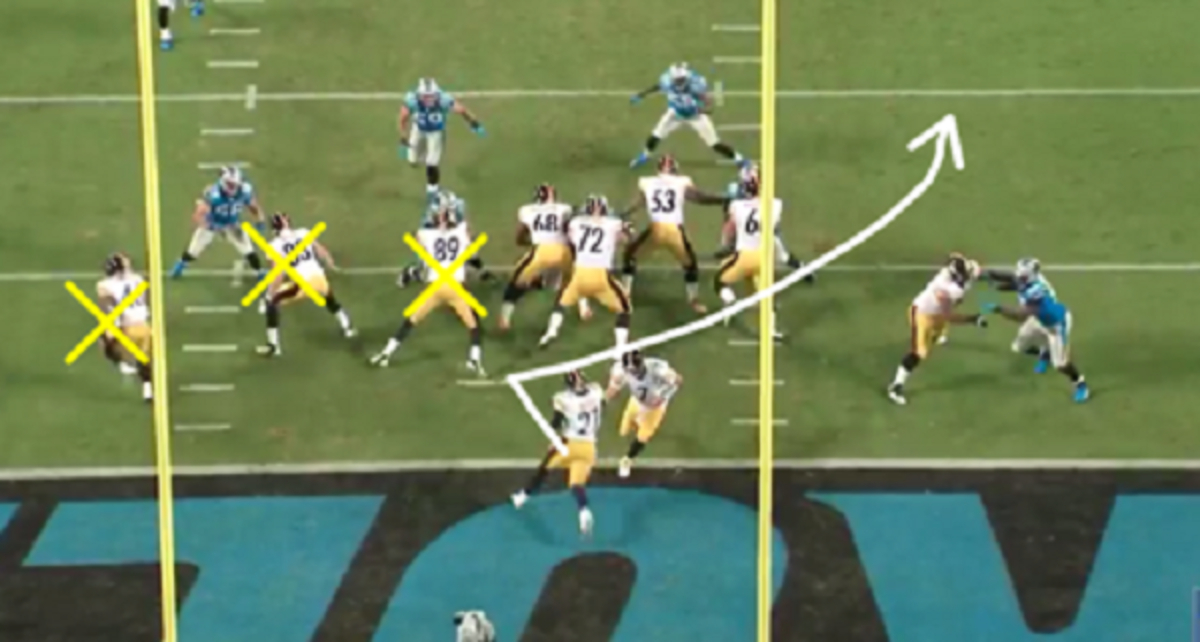
Flip the alignment for Bell's 81-yard scamper. This time, the Steelers overload the right side of the line.
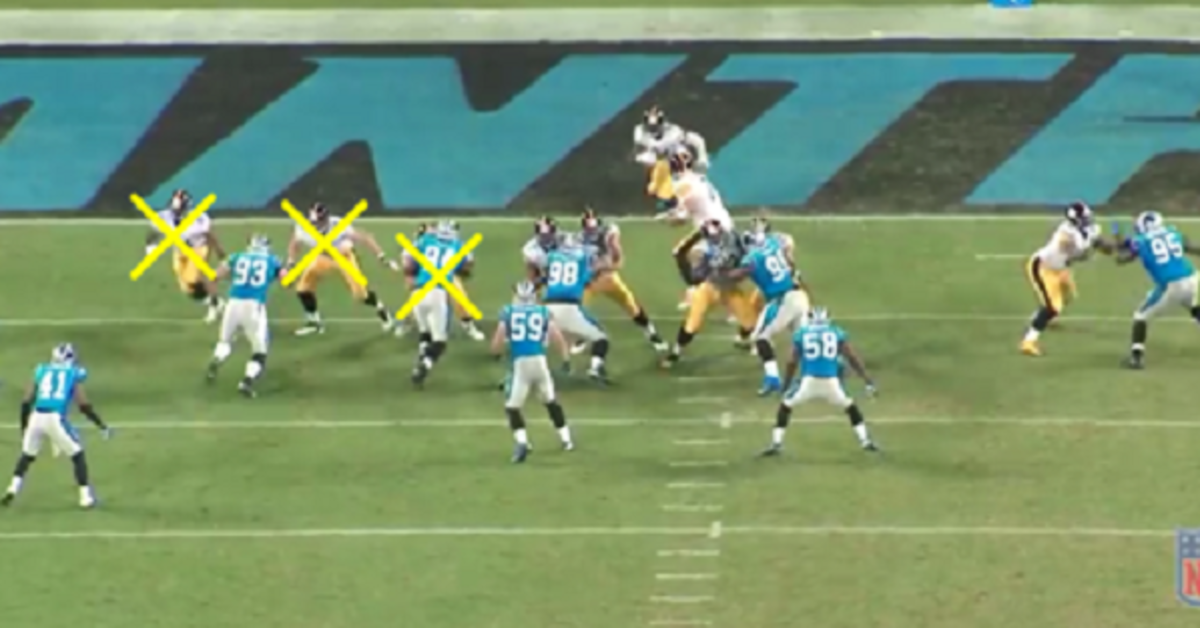
What happens as a result? Well, Luke Kuechly cheats toward the TE/FB combo to prevent Bell from plowing through there and Thomas Davis leans toward the counter to Bell's left. So Bell cuts to the spot where Kuchly and Davis would have converged.
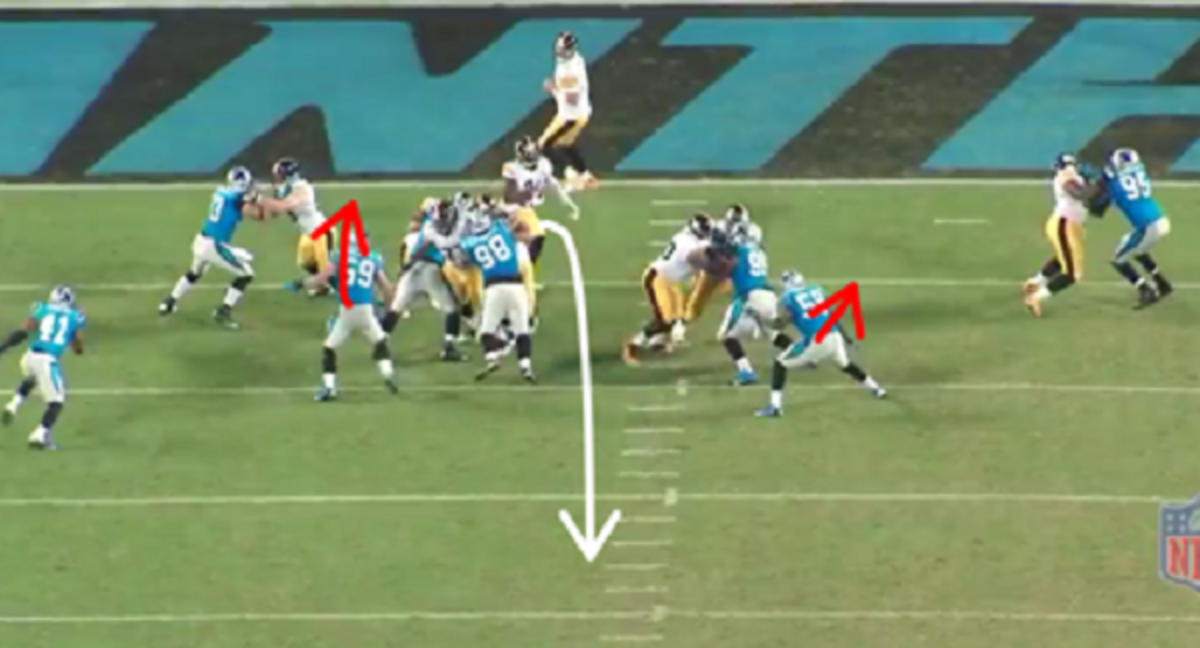
Can Tampa Bay prevent Bell from finding those gaps Sunday? It all depends on how well the D-line stands its ground and how effectively the linebackers read Bell. Granted, the Buccaneers have an edge at LB thanks to Lavonte David ... but the Panthers employ Kuechly and he had one of his worst games as a pro last week.
The Buccaneers definitely cannot repeat mistakes made like on this Steven Jackson run last Thursday. Tampa Bay pulls a guard and tight end to the right side, so David (54) and Dane Fletcher (50) flow that direction, as Kuechly did on Bell's 81-yard run.
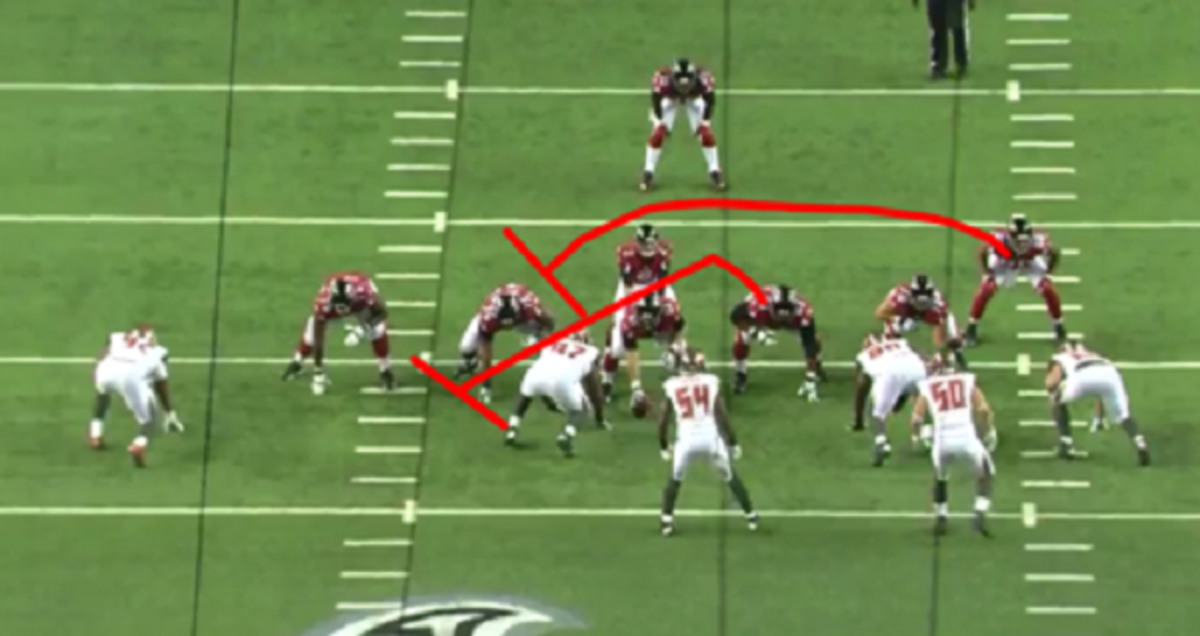
Oops.

For the Buccaneers to have any shot at an upset, the linebackers have to play a very aware, disciplined game against the impressive Pittsburgh ground game.
